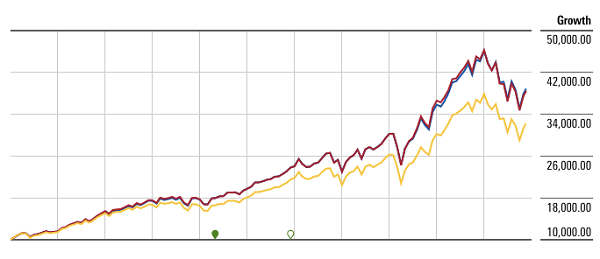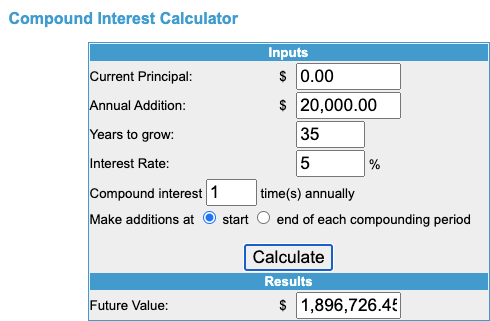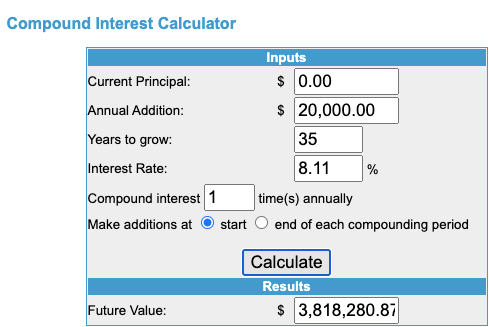
Andrew Hallam
08.12.22
It’s Not Just About Fees: How Index Fund Investors Earn 100% More Than Active Investors Over 35 Years
_
Aliens from the planet, Tranquillo, hovered their saucer over a giant investment conference. While taking over the conference, they corralled the index fund investors to one side of the auditorium. They moved those who invest in actively managed funds to the other side.
Their aim was to dissect the brains of the investors to see their differences. Human rights advocates flocked to protest outside.
The aliens already knew that index funds beat most actively managed funds because index funds incur low internal costs. The few actively managed funds that beat index funds rarely repeat their winning ways. If they beat index funds over one time period, they typically underperform their benchmark indexes (often dramatically, as shown here) over the next time period.
The aliens, however, were more interested in how passive and active investors think. Here’s what they learned from those creepy, live dissections:
1. Investors in actively managed funds move from fund to fund more frequently.
2. Investors in actively managed funds try to time the market more frequently.
3. Index fund investors weren’t perfect. They also tried to occasionally time the market and move their money around. But they tended to be calmer and initiate less speculative behaviour compared to investors in actively managed funds.
4. Over a period of 35 years, index fund investors earn 100 percent more money than those who buy actively managed funds.
The aliens shouldn’t have dissected human brains. After all, Morningstar found similar findings without breaking skulls.
Let’s break it down to two parts: the impact of fees and the impact of behaviour.
The Impact of Fees
Below, you can see a chart. It shows the performance of Vanguard’s S&P 500 index of US stocks (in purple) compared to the average surviving US Large-Cap stock market fund (in yellow).
Vanguard’s S&P 500 Index Vs. Average US Large Cap Actively Managed Fund
November 2012 – November 2022

Source: Morningstar.com
Over the ten-years ending November 20, 2022, Vanguard’s S&P 500 Index averaged 13.44 percent per year. In contrast, its average actively managed counterpart averaged 12.14 percent per year.
That amounts to a difference of 1.3 percent per year. That’s typical. On aggregate, actively managed funds underperform by an amount equivalent to the fees they charge.
The Impact of Behaviour
Most index fund investors subscribe to the idea that neither they, nor anyone else, can see the future. They choose to own diversified portfolios representing the world’s stock market at the lowest possible cost.
In contrast, people who invest in actively managed funds believe active trading is smart. They hire professionals (who manage actively managed funds) to cleverly trade on their behalf. Because they believe they can hire someone who can earn better returns than index funds, they also tend to believe investment professionals can have “hot” or “cold” hands. In other words, they are more apt to move from fund to fund. More of them also tend to believe that market timing works.
Morningstar measures how investors behave in their Mind The Gap, Passive versus Active Edition Analysis. I’ve replicated their figures in 11 categories below. For example, people who invested in US Large Growth actively managed funds underperformed the returns of the funds they owned by 3.30 percent per year over the 10-year period ending March 31, 2018.
To do that, most of those investors either tried to time the market or they tried to time their entries and exits into these funds. Such speculation meant they underperformed the very funds they owned by 3.30 percent per year. The cranial culprits were fear, greed, and a lack of understanding that staying the course is the best route to take.
Index fund investors exhibit fear and greed, too. But they speculate less. As a result, investors in Large Growth index funds underperformed the funds they owned by about 1.62 percent per year.
Index Fund Investors (Passive) vs. Active Investor
Differences In Behaviour
10 Years Ending March 31, 2018
| Fund Category | How Much Investors Underperformed The Funds They Owned (Per Year) | Annual Passive (Index Fund Investors) Behavioural Advantage Over Investors In Actively Managed Funds | |
|---|---|---|---|
|
|
|
|
Large Growth | Active | -3.30% |
|
Mid-Cap Growth | Active | -3.97% |
|
Small Growth | Active | -2.66% |
|
Large Blend | Active | -3.39% |
|
Mid-cap Blend | Active | -3.81% |
|
Small Blend | Active | -2.31% |
|
Large Value | Active | -3.20% |
|
Mid-Cap Value | Active | -3.29% |
|
Small Value | Active | -1.33% |
|
Foreign Large Blend | Active | -3.39% |
|
Diversified Emerging Markets | Active | -1.13% |
|
Equally Weighted Annual Underperformance | Active | -2.88% |
|
|
|
| Index Fund Investors’ Behavioural Advantage |
|
|
| 1.81% Per Year |
Source: Morningstar.com
*Strangely, passive investors in this category beat the returns of the funds they owned. This sometimes happens when investors add regular sums to funds every month, over time, thus buying fewer fund units when fund prices are higher and a greater number of units when fund prices drop.
**Active investors behaved better than passive in this category.
If we equally weight the 11 categories above, index fund investors underperformed the funds they owned by 1.07 percent per year. Actively managed fund investors, however, underperformed the funds they owned by an average of 2.88 percent per year.
So…index fund investors behaved better to the tune of 1.81 percent per year.
The Impact of Fees And Behaviour
Index funds beat their actively managed counterparts by about 1.3 percent per year because index funds cost less. Now add the behavioural difference. When doing so, the average index fund investor beats the average actively managed fund investor by about 3.11 percent per year.
As a result, index fund investors would make twice as much money over 35 years. Below I’ve shown the compound annual difference of 3.11 percent. $20,000 invested annually for 35 years at 5% grows to $1.89 million.

$20,000 invested annually for 35 years at 8.11% grows to $3.8 million.

Fear, greed, under confidence and over confidence impact most investors. Meanwhile, the aliens might say:
“Stay the course with a portfolio of low-cost index funds. Then stay out of your own way and we’ll stay out of your head.”
Andrew Hallam is a Digital Nomad. He’s the bestselling author Balance: How to Invest and Spend for Happiness, Health and Wealth. He also wrote Millionaire Teacher and Millionaire Expat: How To Build Wealth Living Overseas
Swissquote Bank Europe S.A. accepts no responsibility for the content of this report and makes no warranty as to its accuracy of completeness. This report is not intended to be financial advice, or a recommendation for any investment or investment strategy. The information is prepared for general information only, and as such, the specific needs, investment objectives or financial situation of any particular user have not been taken into consideration. Opinions expressed are those of the author, not Swissquote Bank Europe and Swissquote Bank Europe accepts no liability for any loss caused by the use of this information. This report contains information produced by a third party that has been remunerated by Swissquote Bank Europe.
Please note the value of investments can go down as well as up, and you may not get back all the money that you invest. Past performance is no guarantee of future results.
